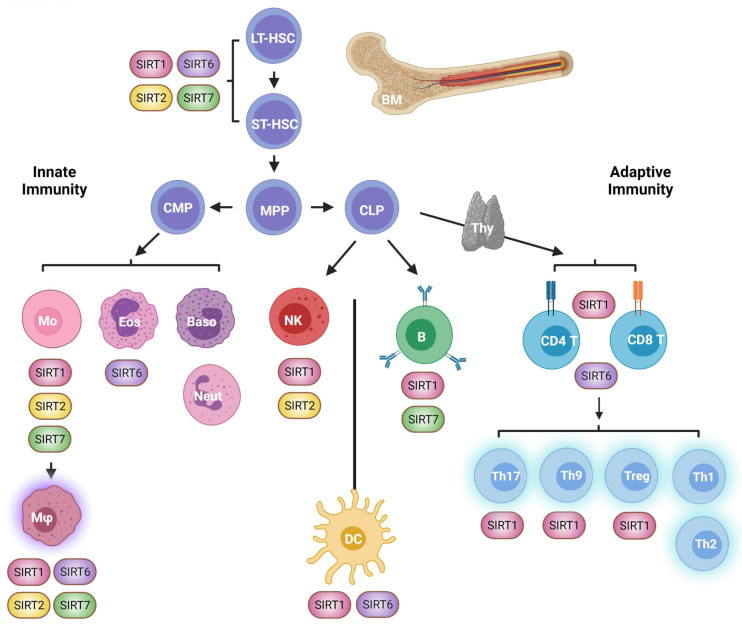Figure 2.
Overview of immune system ontogeny and its relationship with nuclear sirtuin activity. Hematopoiesis starts in the bone marrow through sequential differentiation of hematopoietic stem cells (HSC) into different immune cell progenitors (upper part). Innate immune cells originate from a common myeloid progenitor (MCP) and involve a variety of immune cell types including monocytes (Mo), macrophages (Mφ), eosinophils (Eos), basophils (Baso), and neutrophils (Neu) (left lower part). Common lymphoid progenitors (CLP) give rise to B cells in the bone marrow and T cells in the thymus (thy) (right lower part). Natural killer (NK) cells, despite having a lymphoid origin, play important roles in innate immunity against tumors and viral-infected cells. Dendritic cells (DC) have a lymphoid and myeloid origin (not shown in this figure) and sit at the interphase of innate and adaptive immunity. Sirtuins icons denote sirtuin cell type-specific roles. ST-HSC: short-term HSC; LT-HSC: gong-term; MPP: Multipotent progenitor. Figure created with BioRender.com.

